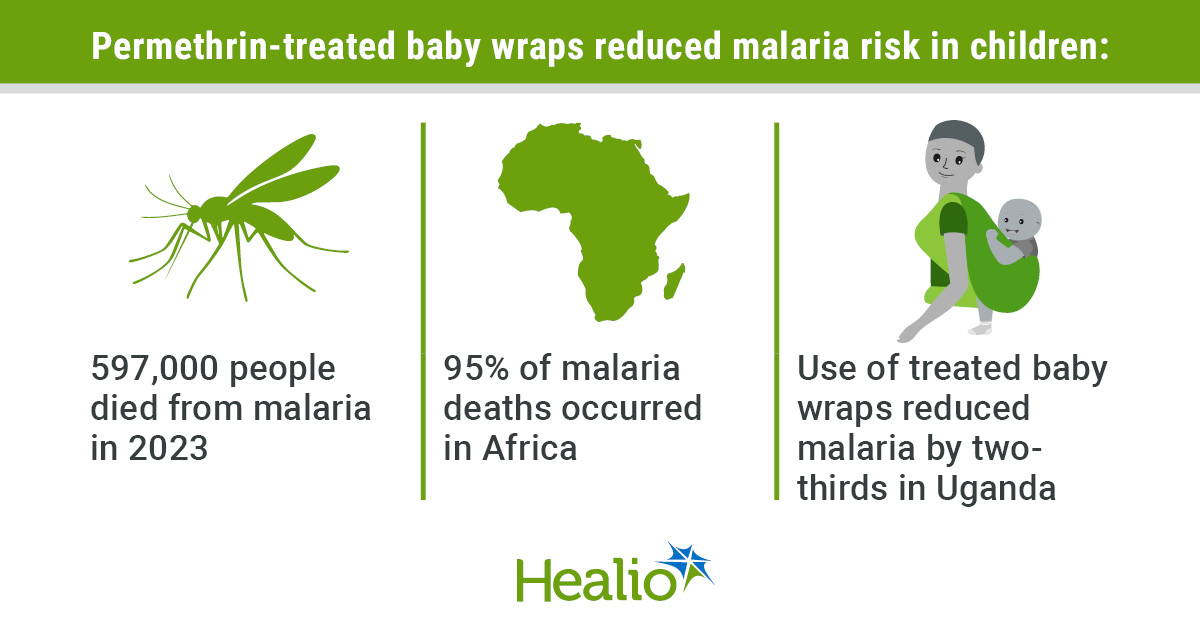October 09, 2025
2 min read
Key takeaways:
- A CRISPR-Cas9-based therapy reduced transthyretin levels in patients with hereditary amyloidosis and polyneuropathy in a phase 1 study.
- The therapy was well tolerated with a favorable safety profile.
A CRISPR-Cas9-based therapy targeting the gene encoding transthyretin greatly reduced transthyretin levels in patients with hereditary amyloidosis and polyneuropathy, according to the results of a phase 1 trial.
As Healio previously reported, the therapy, nexiguran ziclumeran (nex-z, Intellia/Regeneron), reduced serum transthyretin levels in patients with cardiac amyloidosis by 89% at 28 days and 90% at 1 year. Julian D. Gillmore, MD, PhD, professor of medicine and head of the Centre for Amyloidosis at University College London, presented the results of a phase 1, open-label trial of nex-z in 36 patients with hereditary amyloidosis and polyneuropathy (median age, 61 years; 72% men) at the International ATTR Amyloidosis Meeting for Patients and Doctors. The results were simultaneously published in The New England Journal of Medicine.

Julian D. Gillmore
“Nex-z, an in vivo investigational CRISPR/Cas9 therapy, inactivates the TTR gene, whether wild-type or variant, with a one-time treatment,” Gillmore said during a presentation. “We conducted a phase 1, two-part, open-label, multicenter study of nex-z in patients with hereditary amyloidosis and polyneuropathy. The primary objectives were to evaluate safety, tolerability and pharmacodynamics and to measure serum transthyretin levels.”
In part one of the study, 15 patients received a single ascending dose ranging from 0.1 mg/kg of body weight to 1 mg/kg of body weight. In part two of the study, 21 patients received a 55 mg dose (equivalent to 0.7 mg/kg) or an 80 mg dose (equivalent to 1 mg/kg).
Serum transthyretin levels declined from baseline by 90% at 28 days and by 92% at 24 months, according to the researchers.
Treatment-related adverse events included transient infusion-related reactions in 21 patients, decreased thyroxine level without hypothyroidism or elevated thyrotropin level in eight patients and headache in four patients, according to the researchers. Eleven patients had serious adverse events.
One patient died from sudden cardiac death associated with cardiac amyloidosis at 9 months, which was not related to the treatment, Gillmore said.
At 24 months, the familial amyloid polyneuropathy stage was stable in 29 patients, improved in two patients and worsened in two patients, whereas the polyneuropathy disability score was stable in 27 patients, improved in five patients and worsened in two patients, the researchers found.
Between baseline and 24 months, mean change in serum neurofilament light chain level was –9 pg/mL and mean change in modified Neuropathy Impairment Score+7, for which a high score reflects worse impairment, was –8.5.
“A one-time treatment with nex-z led to rapid, deep, consistent and durable reductions in serum transthyretin levels through year 3 in patients with amyloidosis and polyneuropathy,” Gillmore said during the presentation. “In this phase 1 study, nex-z favorably impacted multiple disease-relevant measures in patients with hereditary amyloidosis with polyneuropathy, including those who had previously progressed on patisiran. A single dose … was well tolerated with a favorable safety profile; adverse events were generally transient and reversible. These efficacy and safety data are consistent with those from patients with cardiac amyloidosis who received one-time treatment with nex-z.”
The therapy will be further investigated in MAGNITUDE-2, a phase 3 trial in patients with hereditary amyloidosis with polyneuropathy, Gillmore said.











